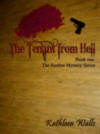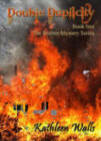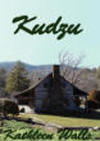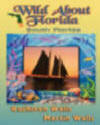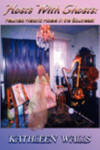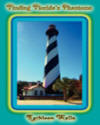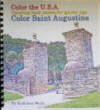Poplar Forest and Thomas Jefferson
Story by Tom Straka
Photographs by Pat Straka
I
Why a tree to lead this article? To start
with, it is a tulip poplar, located at Poplar Forest. It is a
very old tree, believed to be over 200 years old. Popular
Forest was a Virginia tobacco plantation which included a
plantation house, also known as Poplar Forest. Work began on
the mansion, which is still there, in 1806. The tree is thought
to predate the construction of the mansion. The person who
owned Poplar Forest and built the mansion was an interesting
fellow.
We recently traveled up U.S. Highway 29
through Virginia. At Charlottesville, we visited Monticello,
Thomas Jefferson’s primary residence. Most folks know about
Monticello,
but he had a second home, a “vacation home,” or retreat, which
most people do not know about. His retreat is also just off
U.S. 29, near Lynchburg, Virginia. The two related sites are
about 80 miles, or an hour and a half, apart. Poplar Forest,
like Monticello, shows the strong hand of Jefferson, giving the
feeling of being a smaller Monticello. Visiting both on the
same trip made sense, as it easier to see the connection
between the two, and better understand Jefferson.
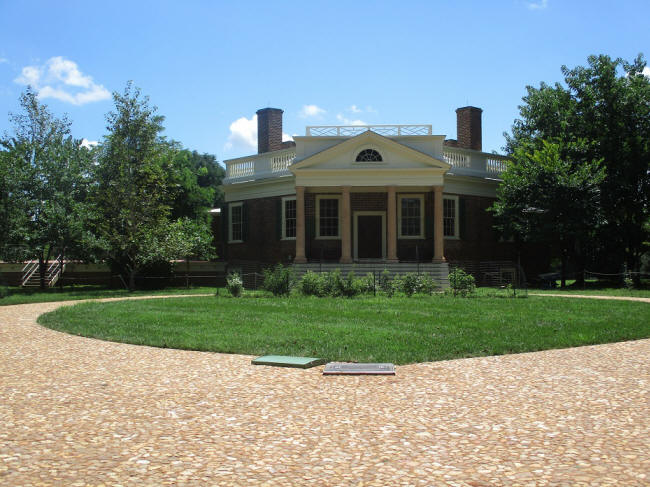
North
view, front of Poplar Forest, with carriage turnaround.
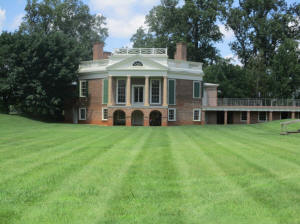
South view, back of Poplar Forest, with sunken south lawn,
influenced by bowling greens
Jefferson had experienced in Europe. Notice the service wing to
the east or right.
Thomas Jefferson and his wife Martha
inherited the nearly 5,000 acres Poplar Forest plantation in
1773 from his father-in-law. The name was inherited with the
land, based on the poplar forest that once thrived there.
Jefferson was too busy with his law practice and government
work to spend much of his early ownership years at Poplar
Forest, and administered the tobacco plantation using an
overseer. However, at the end of the Revolutionary War in 1781,
his family needed to evade British troops hoping to capture him
and spent two months in seclusion at Poplar Forest, probably
utilizing the overseer’s house. During those two months he
wrote Notes on the State of Virginia, his only published book.

View from the parlor looking south through the portico and
across the sunken yard,
designed to focus the view on the landscape.

View of the top of the service wing, used as a patio of sorts
and for entertaining.
Just prior to his retirement, he began to
build his retreat in 1806 using his own design, just like
Monticello. By the end of his presidency in 1809, construction
was nearly complete. Like Monticello, Jefferson would make the
final form a long-term project, redesigning it as new
inspirations arose. It would be smaller than Monticello,
octagonal-shaped, and built of brick. The north and south
facades included pedimented porticoes. Jefferson designed the
interior as a central square surrounded by four elongated
octagons. When inside, the visitor is very much reminded of
Monticello, with classical and neo-classical European
architectural ideas Jefferson developed from his time as
Minister to France (this style came to be known as Jeffersonian
classicism). Poplar Forest was America’s first octagonal house.

Floor plan of Poplar Forest, illustrating the geometry of
Jefferson’s design.

Poplar
Forest is being reconstructed and construction work was ongoing
at places on the tour.
It is interesting seeing how craftpersons recreate the original
rooms.

One advantage of seeing the reconstruction is the ability to
see the framework of Jefferson’s original design.

The reconstruction unveils all kinds of interesting internal
aspects of the building.
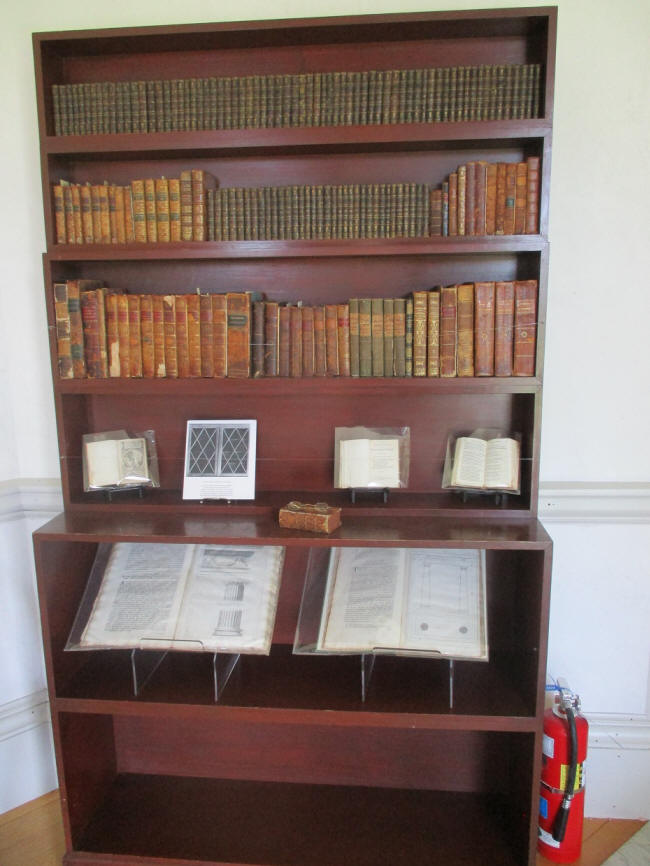
One central thing that seems to dominate Jefferson’s homes:
books.
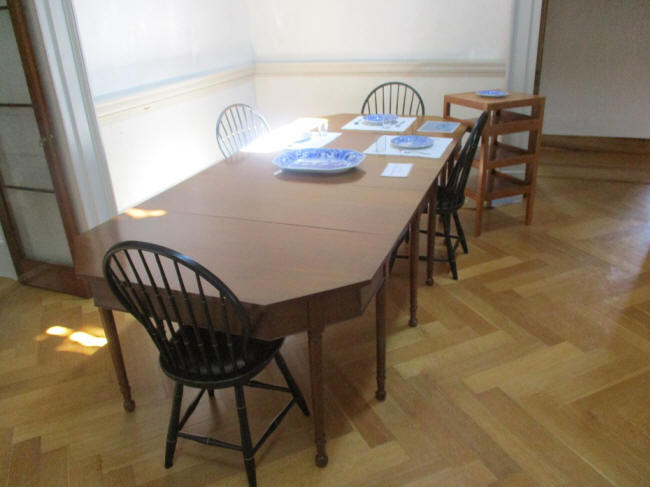
Dining
table in Poplar Forest.
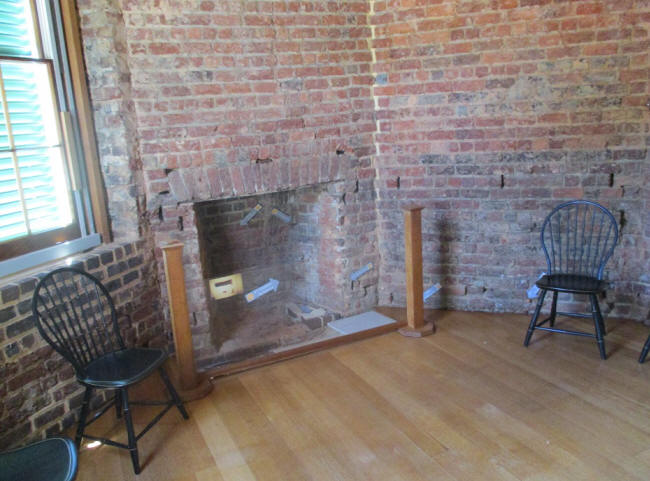
Inside Poplar Forest is much brickwork, like this fireplace.

Jefferson’s own invention, a copying machine, where he could
make duplicate copies.
Jefferson situated the mansion as to act
like a compass. It pointed due north. It could also serve as a
sundial. To the north and south, the octagonal exterior
protrudes, and to the east and west are porticos with stair
pavilions. The yard is circular, like a compass. A service wing
is attached to the house, built into the ground not to distract
from the house.
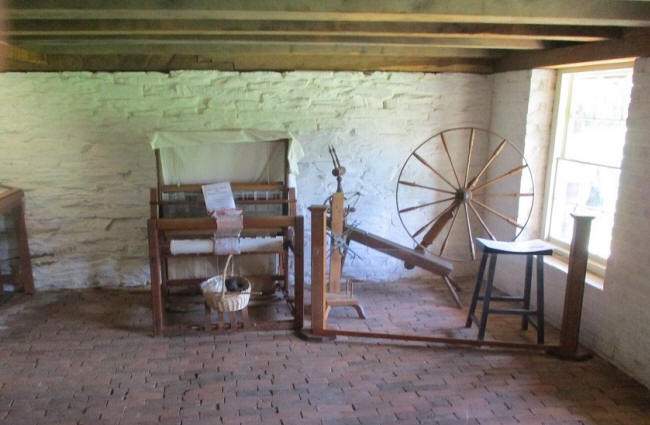
The service wing has examples of activities performed at Poplar
Forest, like making fabrics.

The service wing has many innovations, like a kitchen with a
“range”
allowing for three temperatures at the same time.

One of the interesting things in the service wing was
a batteau.
Jefferson sent his barrels of tobacco and flour to a
warehouse in nearby Lynchburg on the James River. Then he hired
a batteau with watermen to transport them to market in
Richmond.
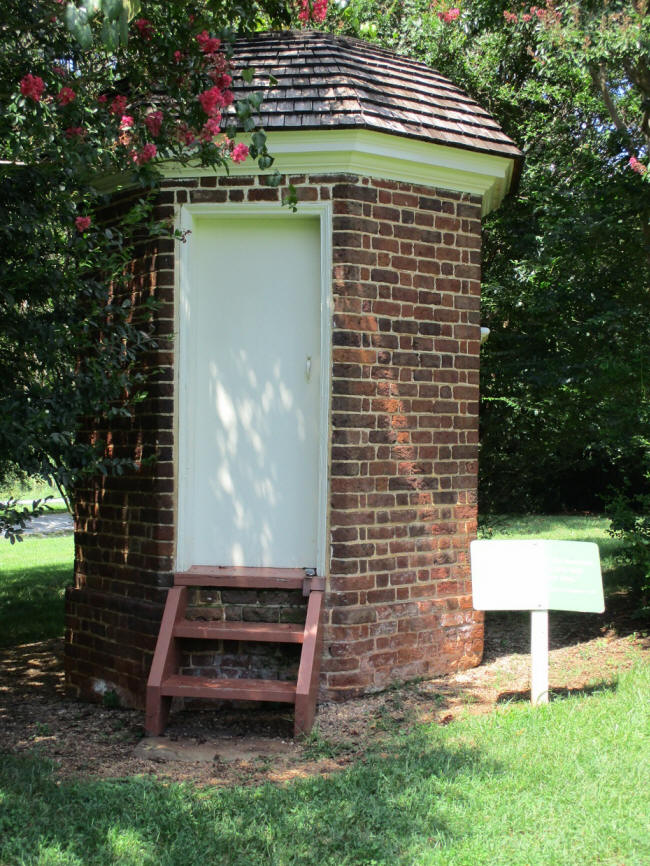
What else would you expect? An octagonal necessary or privy,
one of two that symmetrically flank the house. Jefferson
designed these domed outhouses using the same rules
of architectural proportions as the main house.
Poplar Forest was Jefferson’s escape from
the many visitors and distractions at Monticello, a perfect
retirement home, and he made at least three trips annually
there, describing it as “the best dwelling house in the state,
except that of Monticello; perhaps preferable to that, as more
proportioned to the faculties of a private citizen.” The trip
from Monticello took three days, but once he got there, he
wrote he was “comfortably fixed and attended, have a few good
neighbors, and pass my time there in a tranquility and
retirement much adapted to my age and indolence.”
The trip today takes less than two hours.
A visit to better-known Monticello is really incomplete without
a side-trip to Poplar Forest. Or, Poplar Forest is interesting
enough to be the main trip. The combination makes for a perfect
historical destination.
https://americanroads.net/museum_row_spring2018.htm
https://americanroads.net/renees_route_spring2018.htm
Author/Photographer. Tom Straka is an
emeritus professor of forestry at Clemson University. He has an
interest in history, forestry and natural resources, natural
history, and the American West. Pat Straka is a consulting
forester and the photographer on most of their travel articles.
They reside in South Carolina, but have also lived in
Mississippi and Virginia.

















